State of Texas: ‘We are disappointed,’ Attorneys consider new petition asking Texas Medical Board to clarify abortion guidelines
AUSTIN (Nexstar) — The attorneys who originally petitioned the Texas Medical Board to clarify their guidelines on Texas’s abortion law are considering petitioning the board again.
Amy and Steve Bresnan are unhappy with the Texas Medical Board’s new rules, unanimously approved on Friday morning, which offer further guidance on the conditions under which doctors can legally perform emergency abortions in the state.
“We are disappointed,” Amy Bresnan said. “We don’t think that doctors will feel any more comfortable providing abortion care where it’s necessary under the statute, which means that women are not as safe as they were, before or after these rules were adopted.”
The new rules will require physicians to complete documentation explaining how and when they decided to perform an abortion, within seven days after giving a patient an emergency abortion under the state’s near-total ban on the procedure.
“If a woman’s life is in danger there is no uncertainty there,” said Texas Medical Board President Sherif Zaafran, M.D. “That is where action should happen quickly.”
The guidelines annnounced at the meeting removed some provisions that required doctors to document if they tried to transfer a patient to another doctor or facility to avoid the abortion. But the Bresnans said the board did not get rid of the provision altogether.
“They took that out of the documentation part and put it over into the part of what a disciplinary panel should consider,” Steve Bresnan explained. “That’s an upgraded, if you will, standard. It’s a lot less of a being implied as it is being made more substantive and direct. That’s moving backwards.”
The Bresnans see that as a significant change that should have kept the board from approving the guidelines.
“We do think that this rule is required under statute to be republished because there were substantial changes and under under statute that means that they have to give the public notice and seek comment,” Amy Bresnan said.
After the U.S. Supreme Court overturned Roe v. Wade in 2022, Texas was one of 13 states where abortion bans were automatically instated. Texas’ trigger law prohibits all abortions except under limited circumstances, such as a “life-threatening condition to the mother caused by the pregnancy.” Physicians who perform an abortion outside of these circumstances could be subject to a sentence of up to life in prison and at least a $100,000 fine for each offense.
Pressure around clarifying the law started growing after a group of women sued the state over its abortion law, saying they were denied abortion access in Texas, despite having pregnancy complications that risked their lives or the life of their baby.
In May in the same lawsuit, Zurawski v. Texas, the Texas Supreme Court upheld that the medical exceptions in Texas’ abortion ban are sufficiently broad, and do not require doctors to allow their patients to approach death before intervening.
“The Zurawski opinion, in particular, set a very high standard that the state has to prove, in order to punish a doctor who performs an abortion,” Steve Bresnan said. “And it’s basically that no other reasonable physician would have arrived at the conclusion that the woman’s life was threatened. That’s an extremely high standard. But the medical board today through its comments indicated that it’s treating these like any other garden variety, medical malpractice claim. It’s not.”
Under the guidelines, a doctor who performs an emergency medical abortion could be penalized after board review if they did not obtain a second opinion from another doctor and attempt to transfer the patient to another hospital or physician.
“It’s a long, dark road for doctors and women and for families who are wanting to grow their families and have more children,” Amy Bresnan said. “We are considering petitioning the medical board with regard to rebuttable presumption language, which would basically codify Zurawski, which, of course, we think, should be in the rules that were adopted today.”
The Bresnans said they petitioned the TMB for immediate relief for women with life-threatening pregnancy complications because the legislature was not in session.
The TMB published new language in late March to clarify possible exceptions.
The proposal in March included a series of definitions for terms like “reasonable medical judgment,” “medical emergency,” and “major bodily function.” It also clarified that removing an ectopic pregnancy is not an abortion.
In the previously published guidelines, the TMB says that an abortion may only be performed in compliance with all provisions of the Texas Health and Safety Code. The physician must also document that the abortion was performed due to a medical emergency where the woman faced a significant risk of severe impairment or death, providing evidence that abortion was the only viable option to preserve her life.
The Texas Medical Board consists of 12 physicians and seven members of the public who the governor appoints. One member is an OB-GYN.
Bipartisan bill would protect kids from AI deepfakes
Sen. Ted Cruz (R-Texas) announced a bipartisan bill Tuesday targeting pornographic photos posted online without a person’s consent.
The “TAKE IT DOWN Act,” if passed, would treat real photos and photos created using artificial intelligence the same way. It would also require social media companies to unpublish those photos within 48 hours, Cruz said.
“We deliberately borrowed the legal mechanism from copyright law and applied it here,” Cruz said. “If you put online a scene from the Lion King, that’ll get pulled down immediately.”
The Texas Senator said one of his constituents, Elliston Berry, inspired him to introduce this bill.
Berry, a 15-year-old, said she was a freshman in high school when a pornographic image of her circulated. She said someone created the image using artificial intelligence.
“He didn’t take someone else’s nude images and put their faces on them. Instead, he took their actual bodies, using AI, to make the images look more real,” said Anna McAdams, Elliston’s mom.
McAdams said she tried to contact Snapchat to get the photo taken down. They didn’t respond, McAdams said. That’s when she called Cruz’s office, she said.
“These images are child pornography,” Cruz said.
Cruz, Sen. Amy Klobuchar (D-Minn.) and 11 other senators representing both parties cosponsored the legislation. Senate Majority Leader Chuck Schumer (D-N.Y.) said on Tuesday the bipartisan “TAKE IT DOWN Act” was among his priorities targeting AI imagery.
“We’re going to look for a way to move those bills forward,” Schumer said.
Snapchat said it doesn’t allow pornography of any kind on its platform and said it has built-in protections to prevent people from creating AI-generated imagery on its app.
Texas active shooter alert system has yet to be activated, DPS says
An alert system meant to notify people of active shooter situations was not activated in the wake of a deadly shooting at a Juneteenth event in Round Rock, law enforcement confirmed to KXAN investigators.
Two people died and 14 others were injured in the incident, sparked by a fight between two groups at the event at Old Settlers Park on Saturday night, Round Rock police said.
On Friday, KXAN obtained an arrest affidavit saying the first suspect, Ricky Thompson III, admitted to firing shots at the celebration. Additionally, police said a “male juvenile suspect” was taken into custody Friday and then transported to the Williamson County Detention Center.
A spokesperson for the department said it did not try to activate the Active Shooter Alert System at the time of the shooting because it determined the incident did not meet the criteria required by Texas law for activation.
In fact, the Texas Department of Public Safety said it has yet to receive a request for the system’s activation since its creation in 2021, despite its stated goal of “saving lives and preventing mass violence.”
PREVIOUS: Bill to create Texas active shooter warning system passes Texas House
Representative Brooks Landgraf (R-Odessa) filed legislation to create the system in the wake of a mass shooting that killed seven people and injured 25 others in Odessa in 2019.
It is designed to alert people near active shooter situations through their phones, as well as local broadcast media, the electronic signs on state highways known as “dynamic message signs” and other resources. The idea was to model the warning system after other emergency alerts, such as those used to notify people of abducted children (AMBER Alerts), missing seniors (Silver Alerts), or when members of law enforcement are critically injured (Blue Alerts).
Law enforcement agencies have to request the Active Shooter Alert System’s activation, and the incident must meet several specific criteria:
An active shooter is in the requesting agency’s jurisdiction
There is a determination that an Active Shooter Alert would assist individuals near the active shooter’s location
Verification exists of the active shooter situation through a preliminary investigation by the requesting agency
The active shooter’s last known location is identifiable
Texas Representative Vikki Goodwin told KXAN she believes it is “tragic” that the system is not being utilized.
“We pass laws to make people safer. This one in particular to let people know if there is an active shooting event going on so they can take precaution,” Goodwin told KXAN. “Nobody was aware that this shooting was going on. Some people said they thought it was fireworks, at first, but then they saw people running. So, I think it would have been helpful for an alert to go out.”
Goodwin said she believes there is an increased need for public awareness in cases where the suspect has not been apprehended. She first spoke out about the use of this system in December 2023, after a suspect allegedly shot and killed several people in different locations across Travis and Bexar Counties.
At the time, Austin police said they did not request the Active Shooter Alert System because the situation was not an “active shooting event.”
A spokesperson said, “This was a series of events which took place in several different locations across the city with various or unknown motives and no specific commonality. It is not common practice for APD, or any other law enforcement agency, to issue any sort of alert for every shooting that happens in their jurisdiction with an unidentified shooter.”
Shooting Spree: Decision-making process behind issuing emergency alerts for shootings in Austin
Goodwin said she met with DPS and APD to discuss how to use it better, but she “did not really see any appetite for doing that.”
She has heard concerns from law enforcement that people might be “inundated” with alerts and then become numb or desensitized. However, she feels there could be more narrow parameters or guidelines around when the system is activated.
“We get a lot of AMBER Alerts, and so we feel like, ‘Oh my gosh, another amber alert.’ But yet, that one alert at the right moment for the right person might save a life, so why not.”
Texas cities, congressman consider hospital safety changes after KXAN crash investigation
The crashes at hospitals keep coming – and now, following a KXAN investigation, more Texas cities and a member of Congress are looking at ways to stop them.
A crash through the front window of a health center in Kentucky happened just four days ago. Two other wrecks at medical facilities – in Pennsylvania and Ohio – occurred in just the past month.
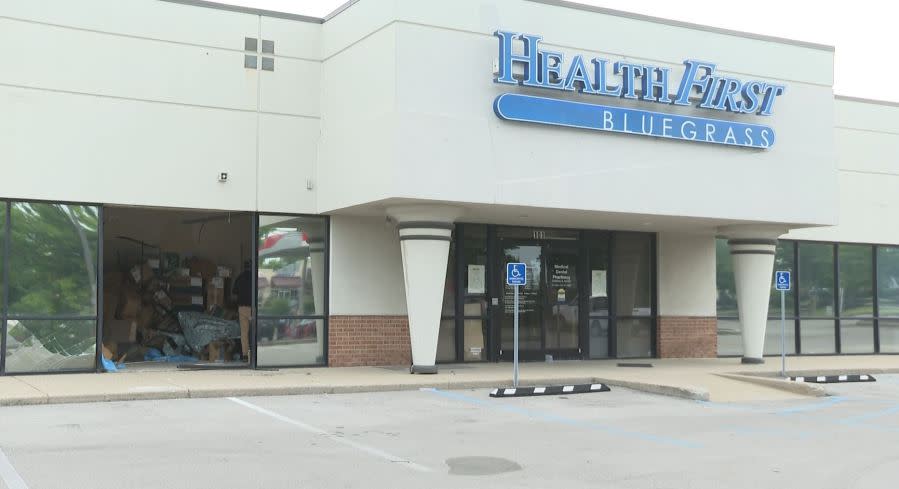
They’re now part of a growing list that includes more than 340 similar crashes across the country in the last decade, according to data KXAN compiled from the Texas Department of Transportation and the Storefront Safety Council.
KXAN’s ongoing analysis has uncovered even more crashes here in Texas. The list has grown to nearly 100 incidents involving Lone Star State medical facilities in the last decade, including crashes in Austin, College Station, Friendswood, Navasota and Weslaco.
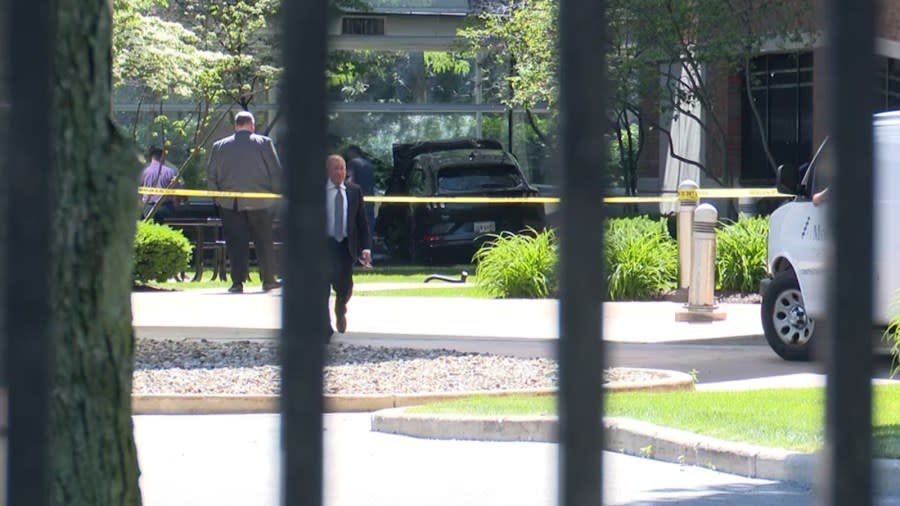
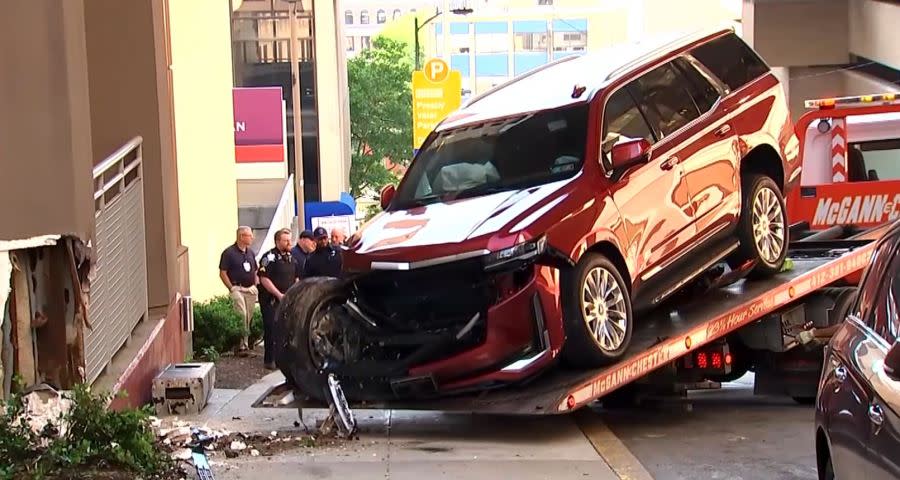
KXAN shared our investigation – prompted by a deadly crash at St. David’s North Austin Medical Center on Feb. 13 that injured five people, including two toddlers – with more than 50 state lawmakers and a dozen cities with prior medical facility crashes. In response, Austin, League City, Navasota and College Station are now considering policies that could require hospitals to install security barriers, called bollards, to stop cars from driving through.
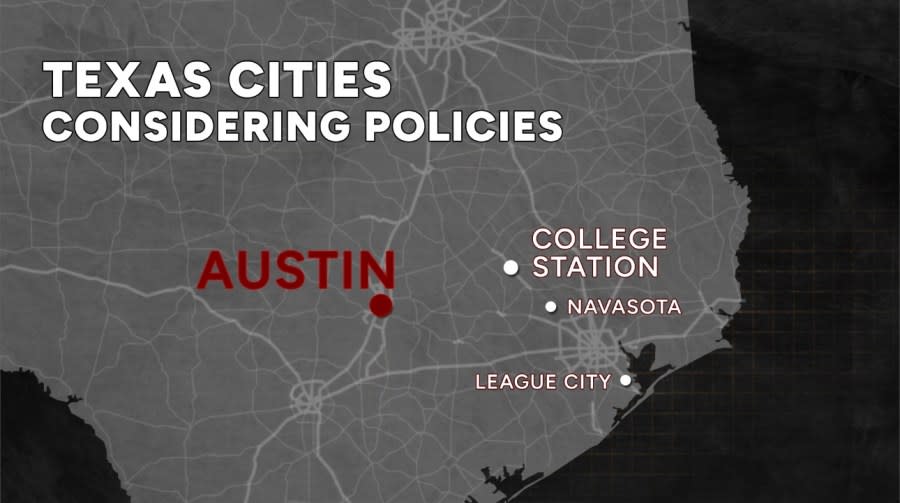
These types of crashes are surprisingly common due, in large part, to drivers in “distress” coming very close to unprotected ER entrances, according to building crash expert Rob Reiter. He co-founded the Storefront Safety Council, which has tracked nationwide incidents for more than a decade.
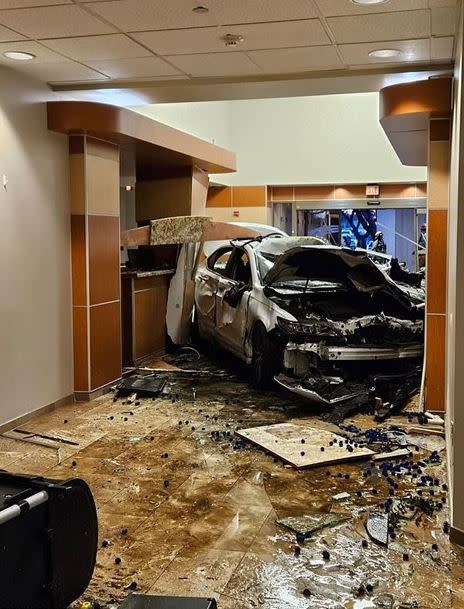
“You have increased risk, by virtue of drivers who are not in the best of condition at the time they’re approaching,” Reiter said. “And if you have set people up to be aimed at your door, because that’s where you want them to come, don’t be surprised if vehicles, from time to time, don’t stop.”
Authorities believe some of the crashes we found – in California, Connecticut and Florida – were intentional.
“This is very interesting,” League City Mayor Nick Long told KXAN, after we sent him a copy of our investigation. “We had not considered adding a requirement for bollards but I will have staff look into it.”
“Yes, we would be willing to consider looking into this with input from City Council and our community,” said Navasota spokesperson Taylor Hughes, following a crash at a Baylor Scott & White medical facility in that city in January.
Austin City Councilmember Mackenzie Kelly plans to bring forward a resolution, based on KXAN’s investigation into safety measures following the St. David’s North crash, at the July 18 council meeting.
Emotional promises from Austin leaders after KXAN hospital safety report
“I had several productive conversations today with my colleagues and that is moving forward,” Kelly said on June 10. “The resolution would direct the city manager to look at the land development code to see where there are places that could be amended to include that as a safety measure on any new hospital builds.”
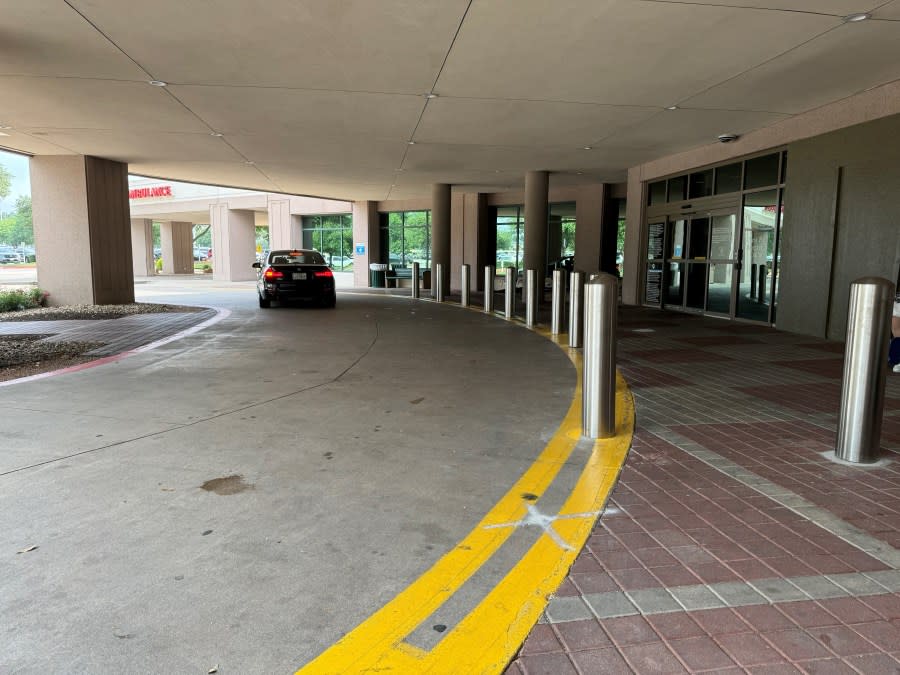
St. David’s – one of the largest health systems in Texas – is accused of “gross negligence” for not having bollards at its North Austin Medical Center, according to a lawsuit seeking more than $1 million filed last month by the family of four seriously hurt after being run over inside the ER lobby.
“Per St. David’s HealthCare policy, we do not comment on issues related to pending litigation,” a statement read.
Following February’s deadly crash, St. David’s North installed seven bollards outside its ER entrance. Five more were added to the same area after KXAN’s investigation.
St. David’s would not say if its new, or existing, bollards are crash-rated – an important distinction, our investigation found, because they can otherwise be “useless” at stopping a vehicle.
The hospital’s former CEO, Tom Jackson, retired on March 20 – just over a month after the deadly accident. KXAN reached out to Jackson for comment but did not hear back. St. David’s said his retirement was unrelated to the February incident.
On June 6, the hospital announced Jeremy Barclay would take over as its new CEO. For the past seven years, Barclay served as CEO of St. David’s Round Rock Medical Center, where he oversaw a $53 million expansion project.
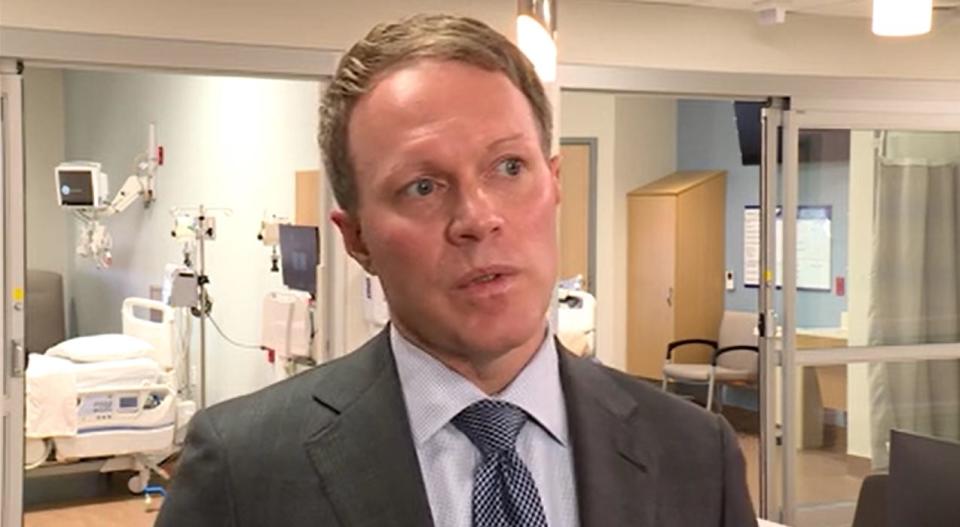
That facility was one of 34 Central Texas hospitals KXAN visited in March and April. We found 18 hospitals had bollards, nine had partial coverage and seven — including the Round Rock Medical Center ER — had none. However, its Surgery Center/Women’s Center, which has a different entrance, had at least eight bollards in front.
Another hospital, Cedar Park Regional Medical Center, installed at least one bollard after KXAN reached out with questions. It said it planned to add more, citing a “commitment to maintaining a safe environment for our patients, employees, physicians and visitors.”
We requested to interview Barclay but, so far, have not heard back. He took over the new position on June 10.
EXPLORE: KXAN’s “Preventing Disaster” investigation into hospital crashes
“Jeremy’s knowledge of our market and healthcare system, combined with his demonstrated success in managing hospital operations and building positive stakeholder relationships, makes him well-prepared to take on this new role,” St. David’s HealthCare President and CEO David Huffstutler said in a press release touting Barclay’s new position.
KXAN traveled two hours east of Austin to the home of College Station Councilman Bob Yancy. He watched our investigation and is now considering requiring bollards at new hospitals in his city.
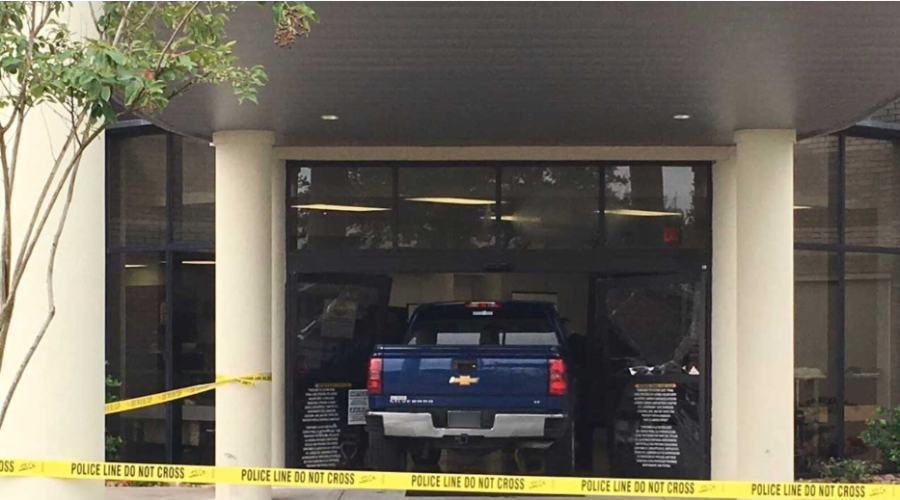
“That’s an issue I just had no idea the severity of until I saw your reporting,” Yancy said.
Crashes have happened in his city before – twice.
In 2017, a truck drove through the ER doors at what was then called the College Station Medical Center.
The hospital is now affiliated with St. Joseph Health. During a recent visit in June, KXAN counted 19 bollards across two entrances. A spokesperson said it would take time to research what happened and when bollards were installed since “we did not own the facility at the time of the incident mentioned.”
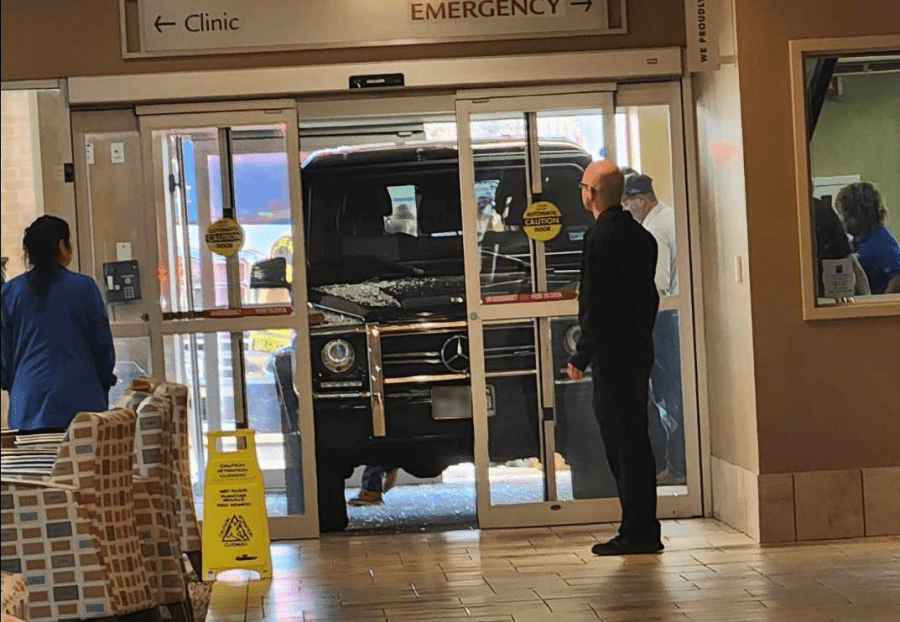
Days before the fatal crash at St. David’s North Austin Medical Center, a woman drove into the ER lobby at the Baylor Scott & White Medical Center in College Station on Jan. 29.
In a phone call with KXAN, the driver, who was not arrested, said she was suffering from a medical episode at the time and had driven to the hospital to get help.
“Not intentional and not intoxication,” she said. “It was medically related.”
That is the same hospital where Yancy was the inaugural chairman of the board and had served for almost a decade from 2013-2022. He is no longer affiliated with the hospital but called his time there a “wonderful, fulfilling experience” that he still holds “in high esteem.”
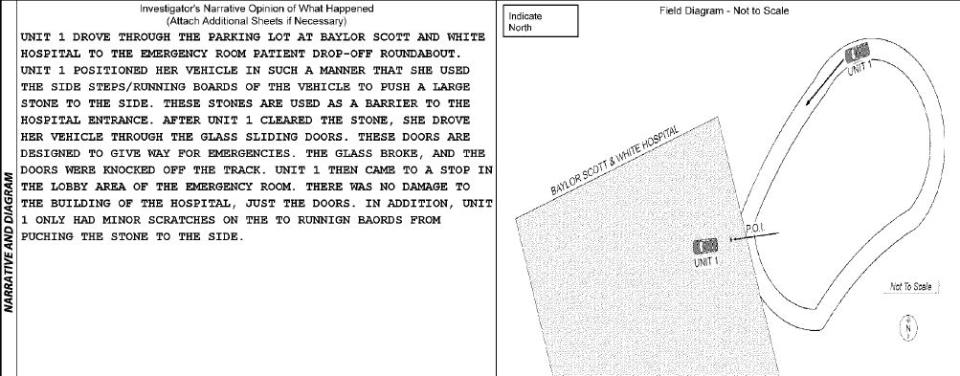
“Why weren’t there bollards there?” KXAN investigative reporter Matt Grant asked.
“That’s a good question,” Yancy said. “It’s just not an issue that ever really occurred to me. And I think, in a lot of ways, this is how public policy evolves. I think you have good investigative journalism that brings to light a significant safety issue.”
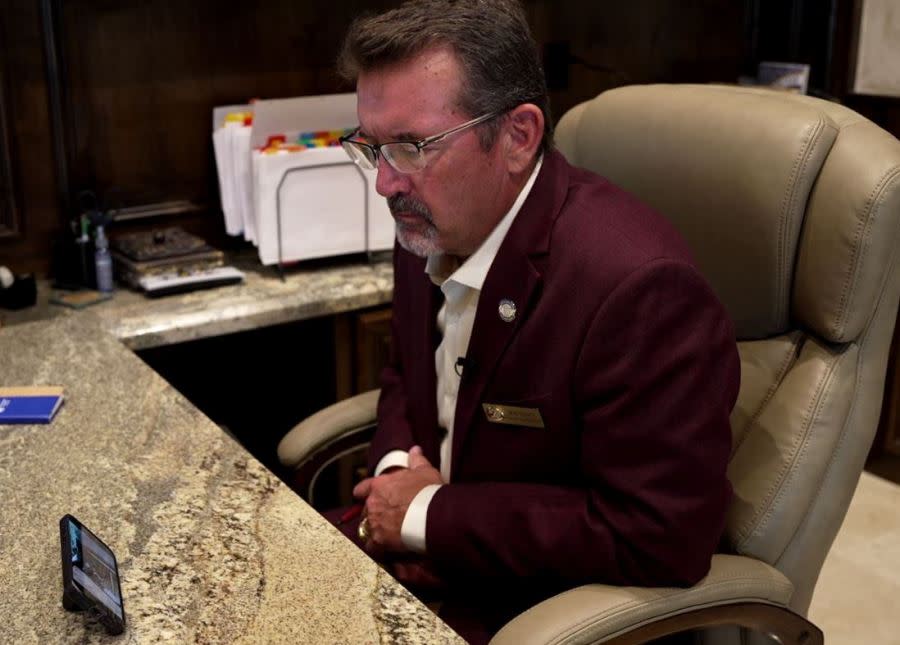
Nearly six months after that crash, his former hospital has still not installed bollards. Instead, it’s using the same stone blocks as barriers – even though they were proven to be ineffective since the car was able “to push a large stone to the side,” according to a College Station police report.
“I now know from your research and that of Texas Transportation Institute, Texas A&M’s TTI, they’re inadequate to the cause,” Yancy said. “Only through a properly engineered bollard can vehicles be stopped and these injuries and our fatalities be avoided.”
“If I had the benefit of your reporting when I was serving as chairman of the board of our local hospital,” he added, “this, I guarantee you, would have been a topic of discussion.”
The city hall building where a bollard requirement discussion could soon take place, it turns out, is surrounded by them.
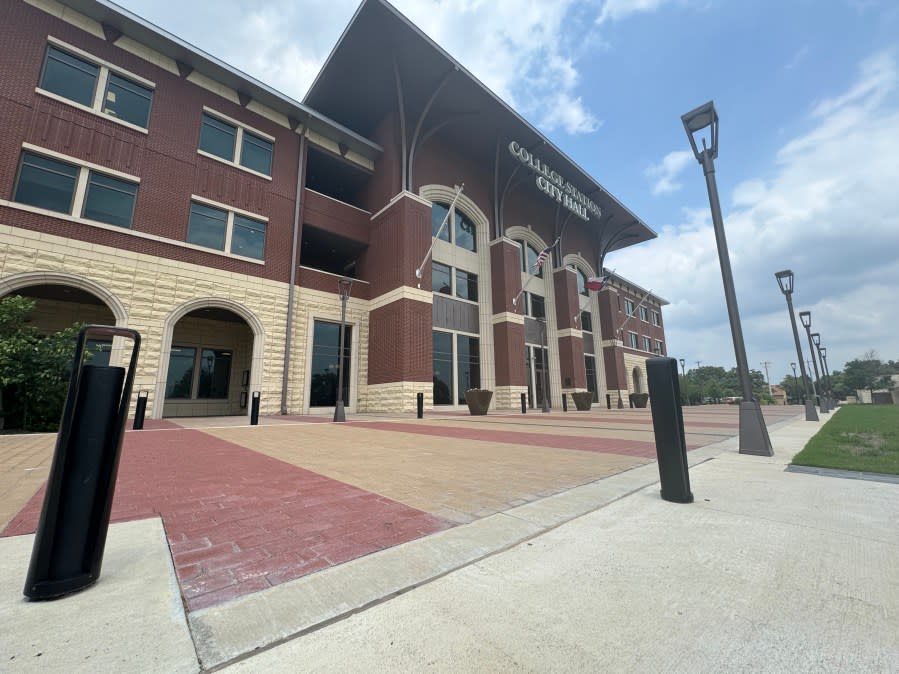
As more and more cities look to make changes on a local level to improve hospital security, that momentum could lead to broader safety changes, experts said.
“I think it helps tremendously,” Reiter said. “If you have multiple cities in a given state who start doing their own ordinances, states get a little nervous about that and they’d like to standardize it and make sure everybody’s on a level playing field.”
“I think, without question, it’ll have an impact on the state level,” he added.
St. David’s previously said it will work with policymakers to “ensure compliance with any new laws if they are passed.” That sentiment was also echoed by Ascension Seton, another large healthcare provider in Central Texas.
Baylor Scott & White Health did not answer any of our questions, including why its College Station medical center does not have crash-rated bollards, or if any of its other hospitals do.
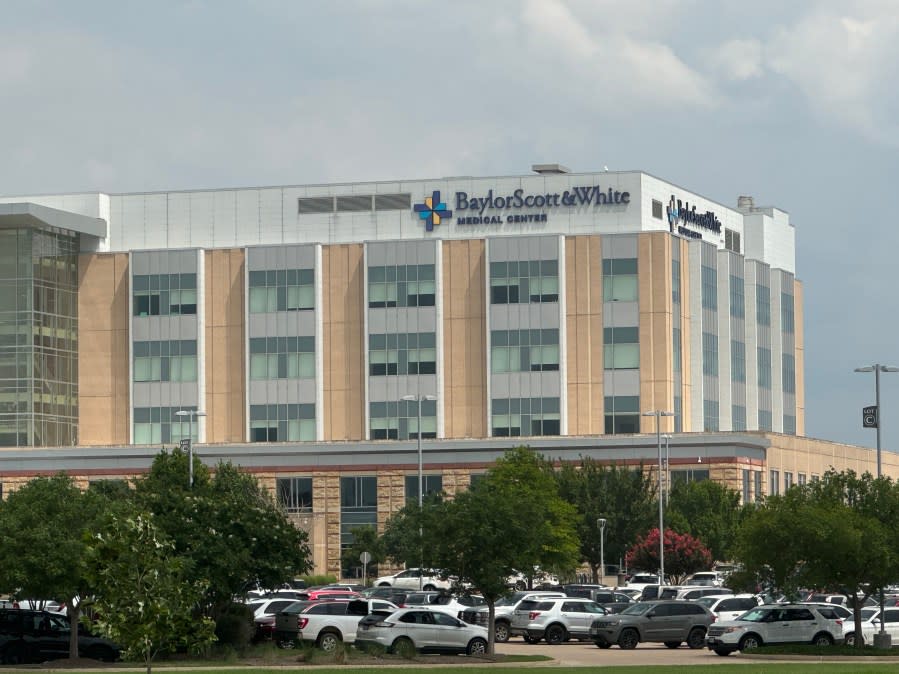
“Baylor Scott & White takes the safety of our patients, visitors and staff seriously,” a statement sent to KXAN read. “We have a number of safety protocols and traffic safety measures at our facilities throughout Texas. We appreciate the open dialogue as we continue our efforts to keep those visiting our facilities safe, and we look forward to working with elected officials.”
“I want to thank you for what I believe is a public service that you, Matt, and your team have done with this story,” Yancy said.
The changes that College Station and Austin are considering will likely only apply to new hospitals, according to Yancy and Kelly.
But, what about existing facilities?
Experts said a lack of awareness and cost are barriers to making changes.
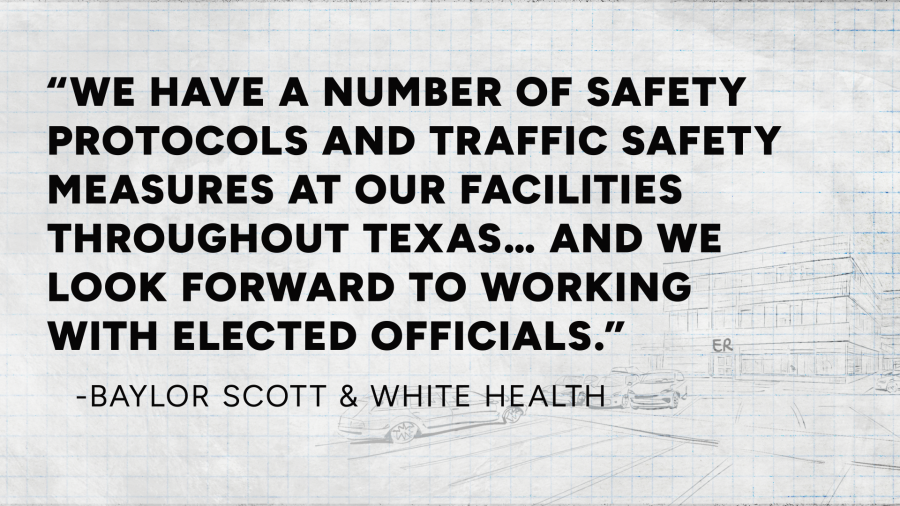
KXAN reached out to FEMA, the U.S. Department of Health and Human Services, and the Department of Homeland Security to see if there are any federal grants that could help pay for physical security upgrades to harden hospitals and other vulnerable critical infrastructure since some of the crashes were intentional.
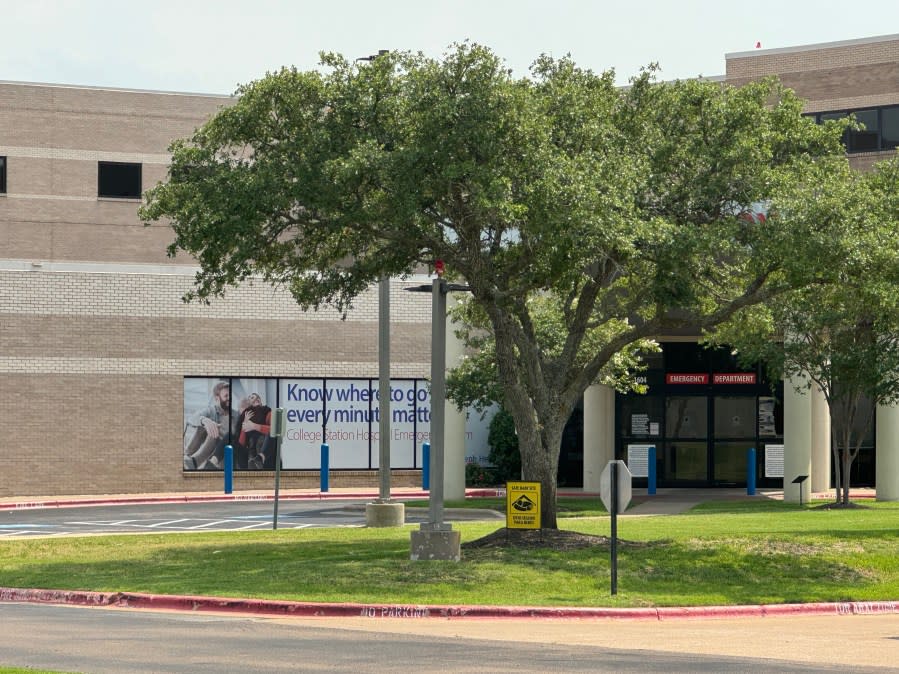
FEMA said it does not provide any type of grants for bollards for private hospitals. There is a Nonprofit Security Grant Program through FEMA that provides “physical and cyber security enhancements to non-profits that are at high risk of a terrorist or extremist attack.” Eligible organizations specifically include “medical facilities” but exclude “for-profit hospitals.” Applicants can apply for $150,000 per site, up to a maximum of $450,000 for three separate locations.
HHS has grants to help hospitals with disasters and public health emergencies but the money cannot be used for “construction or major renovation,” according to the most recent Notice of Funding Opportunity. Funding, or any federal action, could require Congress getting involved.
Congressman Lloyd Doggett, D-Austin, said he is not aware of any grants for security upgrades at private for-profit hospitals. But he thinks they, not taxpayers, should pony up the cost.
“As the very name entails, these are for-profit enterprises,” Doggett said. “And, some of them, have very substantial profits that should be sufficient to pay for safety issues like this to protect their customers, their patients.”
Installing 20 crash-rated bollards at an ER entrance can carry a price tag of around $30,000, according to the McCue Corporation, which makes bollards for companies across the country, including hospitals, and recently invited KXAN to watch its products get crash-tested at TTI.
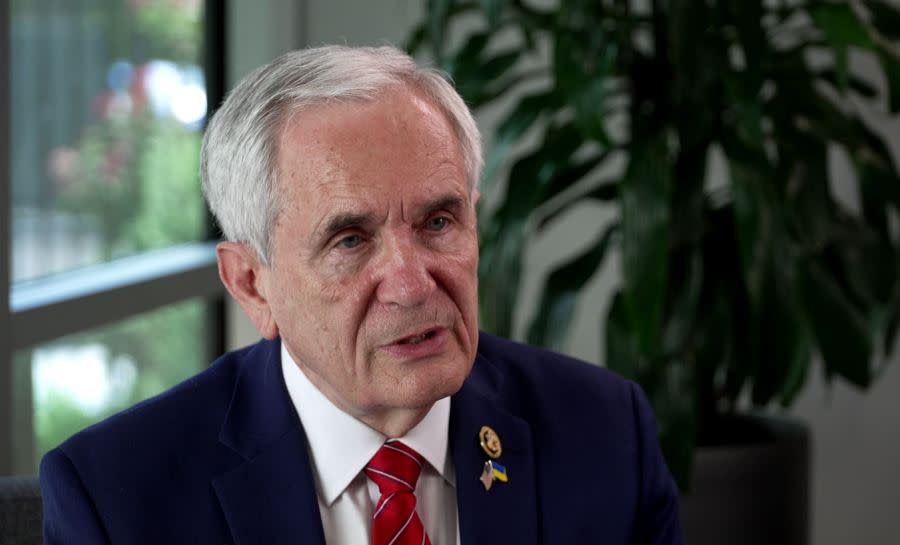
Doggett’s office has been “closely tracking” our series. In an interview with Grant last week, Doggett said our reporting identified “a serious problem” that he was “not personally familiar (with) … until you made these reports.” The day after our interview, on June 11, he sent a letter with a link to KXAN’s investigation to the General Services Administration’s Regional Administrator overseeing Texas, Louisiana, Arkansas, Oklahoma and New Mexico. In his letter, Doggett asked the GSA, which is responsible for federal facilities, to ensure government buildings – such as Veterans Affairs hospitals and “smaller facilities” like Social Security offices – are properly protected.
Doggett said he wants to ensure “adequate safety measures” are installed at “all locations” providing federal services and is “absolutely” committed to that.
Read Rep. Doggett’s letter to GSADownload
“A recent tragedy at St. David’s Hospital in Austin, brought to my attention by the in-depth investigative reporting of Matt Grant at KXAN, resulted from a car driven into a hospital emergency room … These troubling incidents have increased calls for action to require the installation of safety bollards or posts to prevent vehicles from crashing into buildings. With growing security concerns in recent years, I would anticipate that federal buildings have such protection,” Doggett’s letter said.
Doggett cited the Storefront Safety Council’s research, which has tracked around 30,000 crashes in the past decade at privately owned buildings. Based on its research, the SSC estimates there are more than 100 incidents at commercial buildings every day with 6,000 injuries and more than 2,600 fatalities per year.
1 dead after stolen 18-wheeler crashes into Texas DPS building
“This suggests to me a concern that should be raised about federal facilities to ensure that they’re safe,” he said. “Not just for those in the building as government employees, but for all who approach them … to be sure we’re providing adequate protection to all those who use those federal facilities.”
The congressman now wants to know if “any buildings used by federal agencies” in this US region “lack safety bollards or similar safety measures” to prevent crashes.
“I think your report is really important,” Doggett told Grant. “And I will pursue (this) with GSA as a result of your report.”
Copyright 2024 Nexstar Media, Inc. All rights reserved. This material may not be published, broadcast, rewritten, or redistributed.
For the latest news, weather, sports, and streaming video, head to KXAN Austin.


